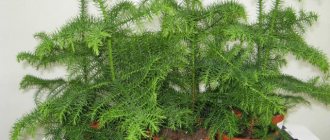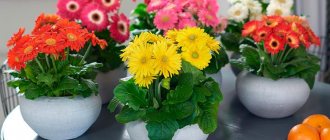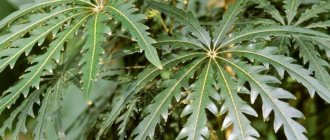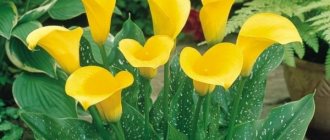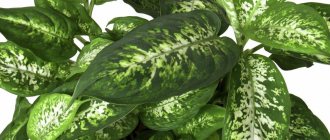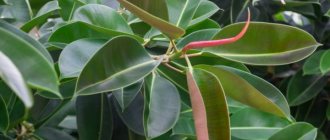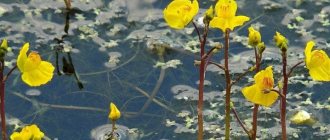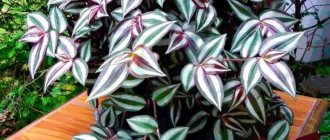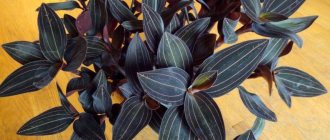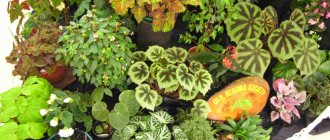People learned to grow fruit trees in their homes a long time ago. They develop well indoors, grow quickly, can be molded, bloom and delight their owners with delicious fruits. One of the most popular are citrus indoor plants.
Citrus trees grow in India, Australia, China, Japan, in tropical or subtropical climates. These regions always have warm and humid air and plenty of sunshine throughout the year. Tasty and aromatic fruits grow on trees and shrubs. Trees in natural conditions grow up to 12 m high.
The peculiarities of growing citrus plants include their uneven growth: the vigorous development of young shoots alternates with a period of dormancy.
Homemade citrus
Citrus fruits are mainly remontant plants and can produce crops several times a year.
To obtain fruits, it is best to purchase grafted seedlings or rooted cuttings of Citrus fruits.
Their flowers are bisexual.
Although most Citrus fruits are self-pollinating, flower growers recommend artificial pollination. This will increase the fruit yield.
The fruit ripening period lasts from 5 to 9 months.
Plant propagation is carried out using seeds, as well as cuttings and grafting.
Citrus diseases
Indoor trees: caring for an Arabica coffee plant at home
Diseases can be associated with physiological disorders caused by a deficiency or, conversely, an excess of microelements.
Some signs of excess or deficiency of microelements:
- Mature leaves are dull and turn yellow. This is due to a lack of nitrogen. If there is rapid growth of young shoots, the plant fattens and does not bloom, then there may be an excess of nitrogen in the soil.
- The leaves turn yellow and become smaller, flowering is weak. There may be a lack of phosphorus in the soil. If there is an excess of a microelement, the plant develops and grows poorly;
- The leaf plate warps, pits form on it, folds appear on the leaf along the veins, some of the branches die off, and foliage falls off during the flowering period. This is possible due to a lack of potassium. If there is an excess of potassium, brown necrotic burns appear along the edges of the leaf;
Lemon leaf for potassium deficiency
- The growth of defective young leaves and the death of growth points are provoked by a lack of calcium and boron;
- With a lack of iron, manganese, zinc or sulfur, leaf chlorosis is observed (green veins are clearly visible on yellow leaves), young shoots die.
Citrus plant disease can be caused by pests. These include:
- scale insect and false scale insect (appearance of wax plaques on leaves and branches);
- mealybug (appearance of white lumps in the axils of the leaves);
- aphids (a cluster of small black insects on young shoots);
- spider mite (yellow dots form on the leaves, a white coating appears below).
Fungal diseases include:
- malseco (the branches turn black and then begin to dry);
- gum bleeding (the appearance of liquid from a wound on the branches and trunk);
Gum treatment
- anthractic disease (the appearance of wet spots on a leaf, which eventually merge into one);
- powdery mildew (white coating on leaves).
When a disease is detected, it is necessary to adjust the watering and feeding of the plant. In case of fungal diseases, damaged branches are removed and sprayed with fungicides.
Symptoms of Mineral Deficiency
Lack of proper care causes the following symptoms in citrus fruits:
- yellowing of the ends of the leaves, which are based on a green triangle - magnesium deficiency;
- lethargy of young leaves, they become pale yellow between the veins - zinc deficiency (in case of severe deficiency, old leaves also suffer);
- discoloration of the space between the veins on the leaves - manganese or iron deficiency.
The occurrence of one of the above symptoms requires treatment of the leaves with a preparation containing all the macro- and microelements necessary for plants in an easily absorbed form.
Discoloration on leaves caused by improper feeding
Another symptom with a physiological basis is yellowing and falling leaves. In this case, you may notice that the edges of the leaves turn yellow, brown and fall off. The reason for such changes is too low air humidity. Spraying the plant helps.
Attention! Citrus cannot be grown in a kitchen with a gas stove. Gas vapors are very toxic to these plants and can cause their death.
Caring for indoor citrus fruits
In order for indoor citrus to develop and bear fruit normally, it is necessary to organize proper watering, lighting, and also set the optimal temperature and humidity.
Watering mode
Aechmea - home care, indoor species
Plants should be watered moderately and regularly. They do not like drought, but waterlogging is also unacceptable for them. The signal for watering is the top dried layer of soil. In summer, watering is done daily, in winter - as needed, the main thing is that the soil does not dry out.
Attention! After proper watering, some of the water should flow into the pan.
Temperature and humidity
For normal development and fruiting of plants, the ambient temperature should be between +18 and +22°C. Higher and lower lead to inhibition of the development of indoor plants.
In spring and summer, the flower pot can be taken out onto the loggia or balcony.
It is also necessary to maintain humidity around 70%. To do this, in the summer, wipe the leaves with a damp cloth, install a humidifier near the flower pot, or spray the plant with soft water.
Top dressing
Fertilizers are applied only during the growing season. Fertilizing is carried out in pre-moistened soil.
To maintain beneficial microflora, use the drug Baikal or Vostok EM-1.
You can feed it with organic fertilizers. To do this, take an infusion of horse manure at the rate of 100 g per 1 liter of water. Infuse the fertilizer for 2 weeks.
You can use an infusion of chicken manure or cow manure in a proportion of 40 g per 1 liter of water.
Note! To apply mineral fertilizing, special complex fertilizers for citrus fruits are used.
Mineral and organic fertilizers are applied alternately every 10 days.
Nitrogen compounds are not used during flowering. During this period, the plant needs phosphorus and calcium.
Wintering plants
In winter, the air temperature should be lowered. If the room is warm, the life processes of the tree will proceed quite actively. Since citrus photosynthesis is slow during this period, the plant does not receive additional energy. As a result, the tree will become depleted, which may lead to its death.
This time is called the rest period. It lasts from November to February. Then the citrus wood ripens and young shoots do not grow.
The air temperature during this period is maintained depending on the type of Citrus fruit. To maintain a 12-hour daylight hours for citrus fruits, artificial lighting is provided.
Growing citrus fruits from cuttings
Branches of varietal fruiting citrus fruits can be used not only for grafting, but also as cuttings: root them in a glass of water or in the ground under a plastic bag - and you will get a young plant that has completely inherited all the varietal characteristics of its parents. Cuttings are obtained using the same methods that we described above: at forums of plant lovers, in agricultural institutes, or brought from southern countries.
Homemade orange seed
Ripsalidopsis: home care and plant varieties
An orange tree can be grown at home from an orange seed purchased in a store. However, in this case it will not bloom earlier than in 7-10 years. In a pot it can reach 3 meters in height.
Orange tree
If you want to get a harvest faster, it is better to graft or propagate the orange using cuttings. After grafting or after planting a cutting, the plant can bloom in 3-4 years.
Conditions for germinating orange seeds
In order to grow a seedling, you must follow the following step-by-step procedure:
- Preparation of seed material;
- Preparation of soil and containers for growing seedlings;
- Replanting seeds;
- Sowing care;
- Picking and transplanting a finished seedling.
It is better to plant an orange in early spring so that there is sufficient natural light for the seedlings.
How to choose a fruit of the desired maturity and separate the stone
To obtain seeds, you need to take fully ripened fruits, without damage or rot. Ripe oranges have a rich, specific smell and are heavy in weight. The fruit should be evenly colored and free of spots.
The most round, large and full-bodied seeds are selected. They are immediately freed from pulp, washed in water and soaked for 12-24 hours in water or a solution of Epin or another growth stimulant. Soaking will soften the outer shell of the seeds, which will allow the seeds to germinate faster.
Attention! Dried seeds are not used for germination, as the thick skin will prevent germination.
Preparing the soil mixture and choosing a pot
Soil for planting can be purchased at the store, or you can make it yourself. To prepare the soil mixture, use leaf soil, sand and peat, taken in equal quantities, or leaf soil and peat.
For sowing, you can use small containers with drainage holes.
Stages of seed preparation
A drainage layer of expanded clay, vermiculite, etc. is placed at the bottom of the pot. Soil is poured on top and compacted a little.
Planting and growing seedlings
The seed should be planted shallowly, to a depth of 1-1.5 cm.
The prepared pots are placed in a warm place. Lighting does not play a role at this stage. To create a greenhouse effect, they are covered on top with a piece of polyethylene or a cut plastic bottle.
You can pre-germinate the seeds. To do this, place a cloth in the container, which is pre-moistened. Seeds are placed on it, which is also covered with a damp cloth. They are setting up a greenhouse. After a few weeks, the seeds will germinate. After germination, the seedlings are transferred to a well-lit place.
When 2 leaves appear, the seedlings need to be picked; when 4 leaves appear, they are transplanted by transshipment to a permanent place.
Orange tree seedlings
Pots with seedlings are placed on south-eastern or south-western window sills.
Seed and sprout watering mode
When germinating a seed, the soil should not be too dry or waterlogged. Therefore, the ground is periodically sprayed with water from a spray bottle. After germination, the soil should also be moderately moist.
How to grow tangerines at home
Mandarin also comes from either southern China or northern India, even its name is a tracing-paper from Sanskrit. Today, its wild species are no longer found, but in culture, tangerine is very widespread.
It is not difficult to grow it at home from a seed; this plant is unpretentious and hardy, just remember that tangerine seeds germinate more slowly than other citrus fruits.
Selection of high-quality full-bodied seeds from a ripe fruit, soaking them in water or hydrogel, planting them in fertile, moist soil and a mini-greenhouse for the first time - the stages of germination of tangerine seeds do not differ from those for lemon and orange.
The first shoots will appear in 3-4 weeks, and for further growth the tangerine will need good soil and air moisture, fertilizing, light and heat, and in winter a dormant period - at the level of the “requirements” of an orange.
To protect citrus fruits from pests (this applies not only to tangerines, but to all these plants in general) - in particular, whiteflies and spider mites - the leaves are washed with a solution of the drug Fitoverm (according to the instructions). As a rule, the procedure is repeated two more times, taking a week break between each. Another common attack on citrus fruits is scale insects, to get rid of which it is often necessary to use “serious” insecticides.
- Scale insects on plants - how to recognize and effectively combat the pest
Are you tormented by scale insects on plant leaves? We know how to deal with it effectively - read and write down.
A tangerine from a seed begins to bear fruit after 4-5 years, and the taste of the tangerines will differ from the mother plant, and it is not clear in which direction. So to guarantee truly delicious fruits, as in the case of an orange, you will need to graft a home plant.
Exactly the same requirements for germination and growing in an apartment for other, more exotic, but quite unpretentious and very elegant relatives of the mandarin - clementine (a hybrid of a mandarin with a king orange) and calamondin (a hybrid of a mandarin with a kumquat).
Citrofortunella home care (calamondin)
Kalamandin what is it
Another evergreen citrus plant with a beautiful name is calamondin citrus. It appeared as a result of crossing kinkan and mandarin plants. It is also called Chinese mandarin and golden orange. They are grown indoors and in winter gardens. Can be presented in standard form or as a bonsai.
Bonsai calamondin
Under natural conditions it grows in height from 3 to 7 m, at home – from 0.6 to 1.5 m.
The flowers are white, self-pollinating.
The calamondin fruit is orange in color, round, slightly flattened at the top and bottom, up to 4.5 cm in size. The pulp is sour, consists of 6-8 lobules, covered with a thin, aromatic skin.
Care
Citrofortunella grows well indoors. Calamondin care involves creating optimal conditions for the development and fruiting of the plant.
Illumination
One of the requirements for caring for calamondin at home is the organization of lighting. Daylight should not be less than 12 hours, so in winter there is a need for artificial lighting. In summer, it is advisable to place a citrus hybrid in the garden. The place should be slightly shaded so that direct sunlight does not hit the plant.
Temperature
During the growing season, the ambient temperature should be between +18 and 27°C. If the temperature is high, the plant will drop its fruits.
Calamondin fruit
During the rest period, the temperature is reduced to +10-15°C.
How to water
The soil in the pot should be moderately moist. Water the plant daily in summer, in winter - no more than once every 1-2 weeks.
For irrigation, the water should be soft and at room temperature. After watering, the water that has spilled into the pan is removed. If the air is dry, then additionally spray the crown.
Top dressing
Fertilizer is applied during the growing season once every 7-10 days. For this purpose, complex fertilizers for citrus fruits are used.
Attention! During the dormant period, fertilizing is not carried out.
Earth mixture
Neutral soil is used. You can use special soil for citrus fruits. To prepare the soil yourself, take 2 parts of turf soil and 1 part each of rotted manure and sand.
Rating of the best tangerine seedlings
Kovano Vasya
A variety with sweetish pulp can be grown at home. The harvest is harvested twice a year. There are no seeds. The taste is sweet and sour. It is distinguished by a large presence of useful components that will prolong youth and maintain health for many years. The tree reaches a height of 80 centimeters. The foliage is light green. The crown is wide, spherical. The color of the trunk is brown, there is roughness on the bark. There are no thorns on the branches. The flowers are snow-white, a yellowish tint is very rare.
Fruiting begins in the second (third) year of life. The berries are round, with an orange skin. Up to 100 pieces appear on one tree. Ripening occurs 5 months after ovary. The lobules are identical, separated by a thin film. Despite the presence of sugar in citrus, the product belongs to the low-calorie category. A universal dietary fruit. Helps you lose extra pounds or gain the missing ones. It all depends on the time of eating (before or after meals). The composition contains useful components such as vitamins K, A, C and D. The peel contains 2% essential oil.
The average cost is 1600 rubles.
Advantages:
- expanded scope of use;
- ideal vitamin composition;
- component for traditional medicine;
- retains its original properties for a long time;
- transportability.
Flaws:
- not identified.
Satsuma
Belongs to the genus of citrus fruits. A distinctive feature is its thin skin, which is easy to clean. The core is soft, yellow-orange in color. Flowering occurs in May. There are no thorns on the branches. The pulp is juicy and tasty. The bush is cold-resistant and hardy to the vicissitudes of the weather. The maximum height of a houseplant is one and a half meters. The crown is spreading, dense, and needs regular shaping. The branches are slightly drooping. There are a lot of citrus fruits. They contain fiber, dietary fiber, carbohydrates, proteins and fats, and many vitamins and minerals. With regular use, you can restore vision, stimulate digestive activity, improve the nervous system, and improve blood pressure.
The purchase price is 1600 rubles.
Advantages:
- richness of vitamins and minerals;
- has a positive effect on the overall health of a person;
- looks attractive;
- standard care;
- perfect gift.
Flaws:
- none.
Unshiu
Japanese variety. Flowering begins in May and is accompanied by a charming aroma. The time for fruit ripening is autumn. There are no bones. The crown is dark green and requires regular pruning. The plant is unpretentious. Withstands temperatures down to +10 degrees. Can create a unique atmosphere in your home. The maximum height is 1.5 meters. The crown is spreading, the leaves are wide. Young branches are green. At two years they turn light brown. Fruiting begins at three years of age. The fruit reaches a weight of 100 grams. The pulp is pleasant to the taste, there are no seeds.
The usefulness lies in the presence of natural vitamins, antioxidants, and mineral components. They have a positive effect on the entire body as a whole. The pulp is used for vitamin deficiency, problems with digestion and the gastrointestinal tract, nervous system disorders, and high blood pressure. The dried peel is added to tea. Helps relieve pain and restores intestinal microflora.
You can purchase a two-year-old seedling for 1,600 rubles.
Advantages:
- a storehouse of vitamins and minerals;
- positive effect on the human body;
- can be bought at a nursery or ordered online from an online store;
- resistance to cold;
- does not require careful care.
Flaws:
- not installed.
How to care for a lemon tree at home
Caring for lemon, just like any other citrus fruit, consists of properly organizing the conditions for its development. The most suitable varieties for growing indoors are Pavlovsky, Eureka and Maikop.
Lemon Tree
Illumination
Daylight hours for a lemon tree should be at least 12 hours. The most suitable places are south-east and south-west windows.
Do not allow direct sunlight to hit the leaves of the plant. If the flower pot is located on the south window, then in the summer you need to shade the citrus. In winter, additional lighting is provided in the evening hours.
Temperature
During flowering, it is necessary to maintain the ambient temperature no higher than 20°C, otherwise high temperatures will cause flowers to fall off.
In winter, the optimal temperature for lemon will be from +14 to +16°C.
How to water
Depending on the temperature and dryness of the air, watering is carried out daily or once every 2 days in the summer, and 2 times a month in winter.
Important! To prevent rotting of the roots, the water remaining in the pan after watering is drained.
It is advisable to wipe the leaves from dust and dirt at least once a month. This will help improve the photosynthesis of the plant.
Top dressing
For normal plant development, it is recommended to fertilize with mineral compounds once every 2 weeks during the growing season (from March to September). Fertilizer is applied after watering. You can use an infusion of cow dung and an infusion of wood ash. It is better to alternate fertilizers.
Earth mixture
When transplanting lemons, use a ready-made soil mixture or make it yourself. To do this, mix peat, turf and leaf soil, and sand in equal parts.
Rating of quality lemon seedlings
Pavlovsky
A one-year-old seedling is usually 15 centimeters high. The first branches and leaves appeared from the cuttings. The root system is just beginning to develop. Vaccinations and careful care are not required. Avoid drying out the soil and exposing it to direct sunlight. Fruiting occurs in the third year of life. There is a lot of ovary. The fruits are tasty and healthy. The variety was bred in the 19th century. Afterwards there were many years of adaptation to new Russian conditions. Pavlovsk lemons symbolize love and prosperity. Used in cosmetology and medicine.
In appearance it resembles a bush or tree. The maximum height is one and a half meters. Crown - branches with thorns. The leaves are oval-shaped, tapering towards the edge, up to 15 cm long and up to 8 cm wide. The leaves are renewed every two to three years. Trunk with brown bark. The flowers are large. They can grow either singly or in pairs. The question of how to pollinate is not worth it. The plant is self-pollinating.
The fruits are spherical and round. The skin is found smooth and rough, thickness from 2 to 8 mm. Slices from 8 to 12 pieces. They are separated by a film and filled with juice. The taste is sour. The minimum weight of a lemon is 120 grams.
The average price of goods is 600 rubles.
Advantages:
- benefits the lungs;
- purifies indoor air;
- improves well-being;
- causes cheerfulness;
- can be grown both at home and in the office;
- a storehouse of vitamins (B2, B1, D, P, C);
- inexpensive;
- self-pollinating;
- treats viral infections;
- normalizes the nervous system;
- cleanses the intestines;
- heals cracks in the skin.
Flaws:
- not identified.
Lemon Meyerra
A one-year-old citrus plant can be purchased at an affordable price. A time-tested variety. Regardless of growing conditions, it produces a large harvest. The aroma when flowering is unsurpassed. The smell of the leaves is not so much lemon as orange. The fruits are bright yellow in color. The pulp is orange and unnatural. The juiciness is at its best. It surprises with its tart aftertaste. It is extremely popular not only in our country, but also abroad. Often found in the USA and China.
The second name is Chinese dwarf. A hybrid of lemon and orange, created by nature itself in natural conditions. The variety is intended for home decoration and industrial cultivation. It is unpretentious to climatic conditions. The yield is impressive.
The smallest of his brothers. It grows in height up to one and a half meters. The leaves are pointed, oval, smooth, dark. The fruits are bright, modest in size. Appear in the third year of life. The ripening period is 9 months from the moment the ovary appears. Its presence will decorate any interior. How often does it bear fruit? All year round. Peak flowering occurs in spring. In one season you can harvest up to 3 kg of crop. The average weight of one lemon is 150 grams. The skin is thin. The pulp is orange, sweet and sour, with a slight bitterness.
The purchase price is 600 rubles.
Advantages:
- remontant variety;
- not afraid of difficult climatic conditions;
- frost resistance;
- unique decorative characteristics;
- abundance of vitamins;
- supports the immune system;
- used to prevent colds;
- lifts the mood.
Flaws:
- not found.
Panderosa
The fruits are huge in size, sometimes reaching 1 kg. A distinctive feature of the variety is its unpretentiousness. Even in a dark, dry room it will grow and develop safely, bloom and bear fruit. You can form a crown of any type. Flowering is abundant and frequent.
There are few lemons. The average weight of each is at least 250 grams. Maturing period is 10 months. The bush is low and compact. The leaves are dark green. Used as a home doctor.
It is a hybrid of grapefruit and citron. Until now, his appearance is a mystery. There are two official versions of the miracle:
- the result of natural crossing of citrus fruits belonging to different groups;
- American breeders had a hand.
Some consider the species to be a variety of dwarf pomelo.
The average price is 600 rubles.
Advantages:
- antiparasitic and choleretic agent;
- the presence of flavonoids and antioxidants in the peel;
- a large amount of vitamins;
- disinfects the air;
- used in cooking as a spice;
- application in cosmetology.
Flaws:
- none.
Novogruzinsky
It grows large in size, so it is not suitable for tiny spaces. Flowering occurs in the 4th year of life. Fruiting is abundant. Looks perfect in a spacious room with high ceilings. Planted in a medium pot, which can be placed both on the floor and on the windowsill. If the tree is not trimmed, it will grow more than two meters. The formation of a crown is not only desirable, but also mandatory.
The branches are spreading and strong. The leaves are elongated, light green, with a unique lemon aroma. The bark is green, which makes the bush more elegant. The variety is classified as remontant. The fruits are medium, from 120 to 170 grams. The shape resembles an elongated oval. The skin is light yellow, oily, smooth. The taste of lemon is sour but pleasant. The pulp is juicy.
A seedling in a nursery sells for 600 rubles.
Advantages:
- tolerates transportation well;
- long shelf life;
- unique taste and aroma;
- high productivity;
- standard care;
- the fruits are suitable for making refreshing drinks;
- value for money.
Flaws:
- not installed.
Mandarin: growing and care at home
This is another citrus that develops well in the house and produces tasty and aromatic fruits.
Illumination
The most suitable place for the plant is southern, southeastern or southwestern window sills. During the growing season, it is important to protect tangerines from direct sunlight. For protection, the window can be covered with gauze. In the autumn-winter period it requires additional artificial lighting.
tangerine tree
Temperature
The optimal temperature for tangerine development is +20°C. For successful budding, it is better to set the room temperature to +16-18°C. For wintering, citrus needs a temperature of +14-16°C.
How to water
Watering is carried out with settled warm water every day in summer, and once every 2 weeks in winter. The soil should be moderately moist.
Top dressing
Feeding the plant begins in April and ends in September-October. During the dormant period, tangerines are not fed. If you do not apply fertilizers, the fruits will become bitter.
Earth mixture
For cultivation, special soil for citrus fruits is used. To prepare the soil yourself, take 2 parts of leaf soil, 1 part each of humus, sand and turf soil.
Reproduction
There are two methods of propagating a citrus tree at home: cuttings or seeds.
Cuttings
To propagate trees of the citrus family using cuttings, cut off mature young shoots that are dormant from the mother plant. The shoot must be from a healthy bush, it must be more than 6 months old, and its shape must be round.
Next, divide the cuttings into parts of 3-4 internodes. Make the top cut straight. Remove the bottom leaf, and under this eye make an oblique cut, scratch the bark a little with a clean needle. Dip the cutting into the root growth biostimulator "Kornevin", then immerse it in the soil until the next leaf. The rooting process will take from 2 weeks to 1–2 months. A lot depends on the level of air humidity here.
Important! Never take a shoot that is in the growth phase. The chances of its successful rooting are too low.
Seeds
To obtain a citrus tree from seeds, follow proven technology:
- Place a layer of drainage on the bottom of the container.
- Fill the pot with a substrate including humus, coarse sand and fertile soil. Leave a couple of centimeters free at the top of the pot.
- Remove the seeds from a ripe (or slightly overripe) fruit.
- Without pre-drying, immediately plant the grain in the soil to a depth of 2–3 cm.
- Organize a small greenhouse: cover the container with a plastic bag and place it on the windowsill. Remove the bag every evening, allowing the soil access to air.
Water the soil once every 3 days. In winter, illuminate the pot for a month. Sprouts will appear after 2–4 weeks.
Grapefruit tree at home
Like any citrus fruit, grapefruit will grow and bear fruit only if optimal development conditions are met for it.
Illumination
Daylight hours should last 10-12 hours. In winter, lighting is provided in the evening, if the day is cloudy - throughout the day.
Homemade grapefruit
Temperature
In the spring-summer period, the temperature should be between +20-27°C, in winter – +4-8°C.
How to water
The soil should be moist, but not waterlogged. In summer, watering is carried out daily, in winter - once every half month.
Top dressing
Fertilize the plant once every half month from April to September. In winter, fertilizing is not carried out.
Earth mixture
As with any citrus fruit, it is best to use Lemon soil. For self-preparation, take equal parts turf soil and humus, two parts leaf soil and ½ part sand.
By following simple rules for caring for citrus fruits, you can always grow beautiful small trees at home that will delight your owners with tasty and aromatic fruits.
Preparation.
At the initial stage, you will need to choose the right planting material. Preference is given to large seeds from fresh lemon fruits. A hole is made at the bottom of the plastic cup. After this, the container is filled with loose black soil. Seeds are placed to a depth of 2 centimeters. Use lemon seeds immediately after removing them from the pulp. Plant up to 10 seeds in one container. Seeds germinate 3-4 weeks after planting. Of the sprouts, only strong ones are left, for which further care continues.
At 16-20 weeks, the seedlings become large and require transplanting into a larger container. You must do this carefully, keeping the earthen lump. At the end of the procedure, a small volume of vermicompost is added to the soil. It has a beneficial effect on the development of plants and accelerates their development. After replanting, the lemon pot is periodically rotated about 90 degrees so that the plant receives sunlight evenly.
During the development of the seedling, it is necessary to induce lateral branching of the stem. To do this, you need to carefully split the tops of the growing shoots. You can use tweezers or a fingernail as a tool.
Fruiting.
To stimulate fruiting in a lemon tree, the base of the trunk along with several main branches is pulled with a copper wire until it is slightly pressed into the bark. This manipulation promotes deformation, as a result of which substances that promote the appearance of buds are synthesized in the plant. A year later, the copper ring is carefully removed, and the wound site is covered with garden pitch. The treated surface is wrapped in polyethylene and left until the damage is completely healed. To stimulate flowering and fruiting of lemons, you should resort to artificial lighting. This is easy to organize through the use of fluorescent lamps and phyto-lamps.
As the tree grows and develops, it should be transplanted into a larger container twice a year. The optimal time for transplantation is the end of winter and the beginning of summer. It should be remembered that an important element for the growth and fruiting of lemons is the timely application of complex fertilizers to the soil.
Lemon care
Optimism
Citrus fruits give their owner an optimistic mood and help fight despondency. Their delicate aroma and bright color of the fruit help improve the emotional background and help prevent the development of depression. This property is most important in the autumn and winter months, when a person acutely feels the lack of sunlight. It’s gray and cold outside, this weather puts pressure on the psyche, which is why many are depressed.
But, as soon as you look at a cute ornamental tree covered with orange oranges or yellow lemons, your mood immediately improves. The presence of such a plant in the apartment helps to calm down and cope with problems more easily.
Wealth
Followers of the famous Chinese teachings of Feng Shui believe that the presence of certain plants in the house contributes to the acquisition of wealth. These types include miniature citrus trees, which are now popular.
The mandarin has always been revered most in Asia. The round small fruits are bright orange in appearance and resemble gold coins. Therefore, they are credited with the ability to bring wealth and prosperity to their owner. The tree prevents the free movement of negative energy, clearing the room of it. And it is believed that the best result will be achieved by its proximity to the Crassula, which is also called the “money tree”. This flower received this nickname for its rounded, fleshy leaves, which evoke associations with coins.
It is not recommended to place citrus fruits in rooms facing northeast. The plant should be on the nightstand; it cannot be placed on the floor in the corner. Buying a tangerine is allowed only in high spirits, otherwise it will be useless.
